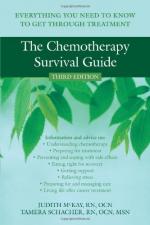|
This section contains 200 words (approx. 1 page at 300 words per page) |

|
As the early work in developing cures for sleeping sickness and syphilis suggested, compounds that were potentially harmful, if carefully used, could be therapeutic. Indeed, the first drug that showed the potential to fight cancer was a poison called mustard gas, which had been used in World War I by the Germans against Allied troops.
Chemicals and Cancer
Even before scientists began studying the use of poisons to treat cancer, they were interested in how certain chemicals known as carcinogens could cause cancer. In 1775 an English surgeon named Sir Percival Plott conducted the first systematic study of cancer in London's chimney sweeps. Boys as young as seven years old were often employed as chimney sweeps because they were small enough to climb into narrow chimneys to scrape sooty residues off the inner walls. Plott noticed that, despite their youth, these chimney sweeps developed cancer...
|
This section contains 200 words (approx. 1 page at 300 words per page) |

|




